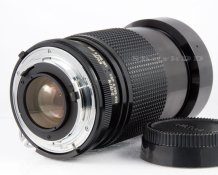ctrout
Member
- Joined
- May 25, 2012
- Messages
- 46
- Format
- 35mm
So I found a supposedly rare and exceptional Vivitar Series 1 28-90mm f2.8-3.5 in Pentax A mount. I was shopping for a lens in that range and this one was in mint condition at a great price so I picked it up. I tried it out on a Pentax digital body and found that it was overexposing. I put it on one of my Super Programs and opened the film back so I could watch the aperture and sure enough, it is closing almost imperceptibly more slowly than it should. I mean, you really have to be paying attention and watch several times to really be convinced that the lens has a problem.
I sent an email off to Vivitar and they replied very quickly that this lens was made before the company was bought out by another so they conveniently washed their hands of the problem, ststing that they would not attempt a repair.
I figure that I'm not into it for that much and a repair may exceed the value of the lens so I might just attempt it myself. Has anybody here ever disassembled this lens? I've spent some time poking around for a tutorial with no success. Can anyone point me to an online tutorial or video of this lens being torn down or reassembled?
I sent an email off to Vivitar and they replied very quickly that this lens was made before the company was bought out by another so they conveniently washed their hands of the problem, ststing that they would not attempt a repair.
I figure that I'm not into it for that much and a repair may exceed the value of the lens so I might just attempt it myself. Has anybody here ever disassembled this lens? I've spent some time poking around for a tutorial with no success. Can anyone point me to an online tutorial or video of this lens being torn down or reassembled?












